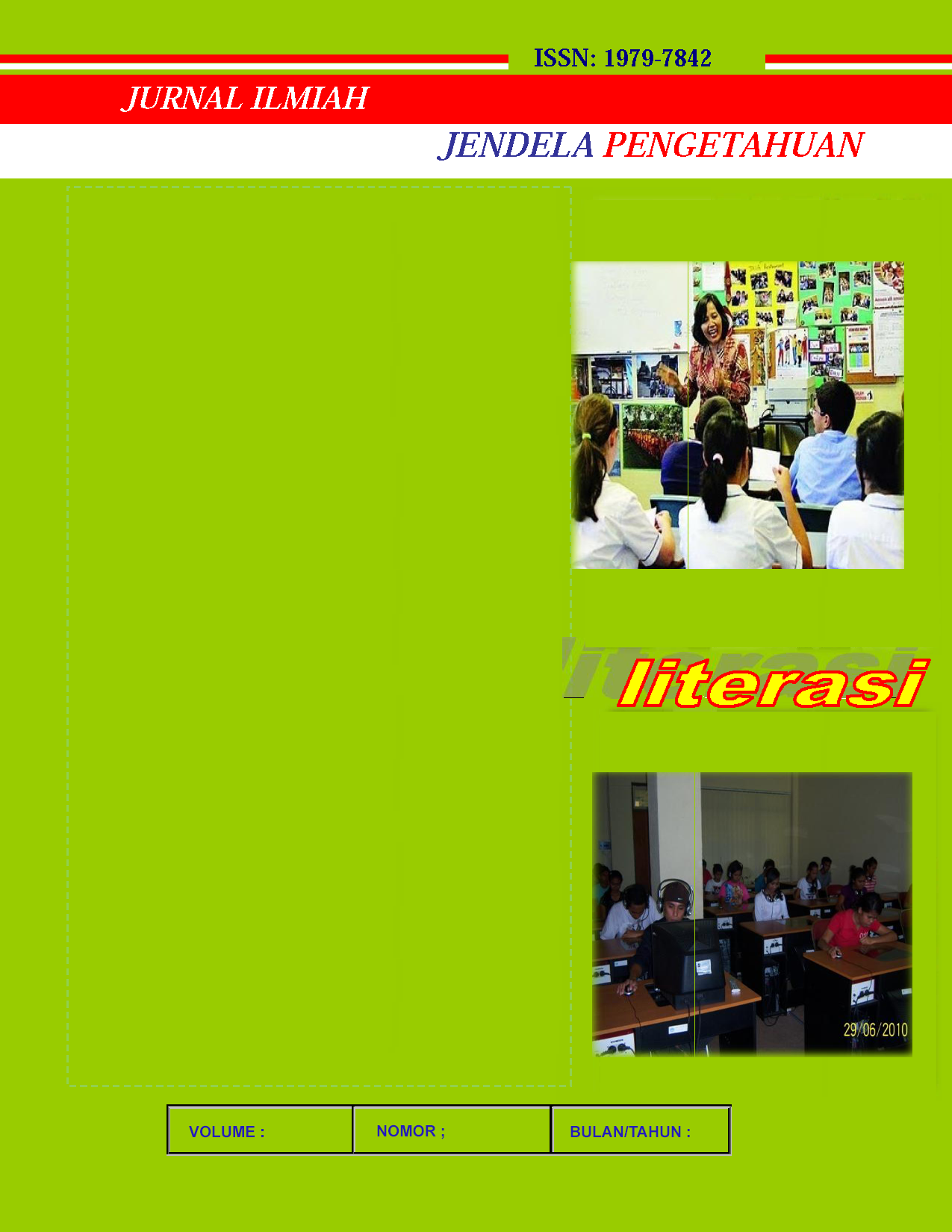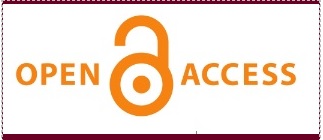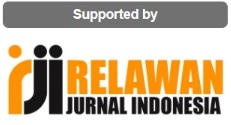Slums: Uncovering Urban Problems and Challenges
Permukiman Kumuh: Menguak Masalah dan Tantangan Perkotaan
Abstract
Slum settlements represent a complex social and economic issue many countries face worldwide. This research aims to provide a comprehensive insight into the challenges of slum settlements. The study employs a literature review method to understand the context of slum settlement issues deeply. The research findings highlight that slum settlements are a complex global challenge many countries face, driven by rapid urbanization and high levels of economic inequality. Cooperation between governments, the private sector, and civil society organizations is crucial to address these challenges. Governments play a key role in designing policies, allocating resources, and monitoring slum improvement programs. Through effective collaboration between governments, the private sector, and civil society organizations, holistic and sustainable solutions are expected to improve housing conditions, facilitate access to basic services, and enhance the quality of life for urban residents, with the ultimate goal of sustainably eradicating slum settlements.
Downloads
References
Agustin, I. W., & Hariyani, S. (2023). Pengelolaan Infrastruktur Kota dan Wilayah. Universitas Brawijaya Press.
Agustina, N. A., Prasita, V. D., Kusuma, A., & Rosana, N. (2023). Pemanfaatan Sumberdaya Lahan Pesisir Berbasis Daya Dukung Lingkungan Dalam Menghadapi Perubahan Iklim Global. Hang Tuah University Press.
Akbar, P. N. G., & Edelenbos, J. (2020). Social Impacts of Place-Making in Urban Informal Settlements: A Case Study of Indonesian Kampungs. Social Sciences, 9(6). https://doi.org/10.3390/socsci9060104
Anisyaturrobiah, A. (2021). Dampak Urbanisasi Terhadap Penyediaan Pemukiman Dan Perumahan Di Wilayah Perkotaan. Jurnal Ekonomi Bisnis Dan Akuntansi, 1(2), 42–54. https://doi.org/https://doi.org/10.55606/jebaku.v1i2.136
Badan Pengembangan Infrastruktur Wilayah. (2016). Rencana Strategis Kementerian Pekerjaan Umum dan Perumahan Rakyat Tahun 2020-2024. Badan Pengembangan Infrastruktur Wilayah. https://pu.go.id/pustaka/biblio/rencana-strategis-kementerian-pekerjaan-umum-dan-perumahan-rakyat-tahun-2020-2024/BKKL7
Binti Singh. (2005). Slums, Rehabilitation and Government Policy: the case of the Slum Rehabilitation Programme in Mumbai. Urban Policy and Research. https://www.researchgate.net/publication/312806446
BPS. (2021). BPS: Laju pertumbuhan penduduk Indonesia melambat, ini penyebabnya. Yahoo Berita. https://id.berita.yahoo.com/bps-laju-pertumbuhan-penduduk-indonesia-100954765.html
Crispi, G., Main, R. L.-L., Zhang, H., & Gatsinzi, J. R. (2022). Slum Upgrading Legal Assessment Tool. Un-Habitat, 2. www.unhabitat.orghsnumber:HS/005/22E
Dickson-Gomez, J., Nyabigambo, A., Rudd, A., Ssentongo, J., Kiconco, A., & Mayega, R. W. (2023). Water, Sanitation, and Hygiene Challenges in Informal Settlements in Kampala, Uganda: A Qualitative Study. International Journal of Environmental Research and Public Health, 20(12). https://doi.org/10.3390/ijerph20126181
Gilbert, A. (2005). Book Review: The challenge of slums: global report on human settlements 2003. In Progress in Human Geography (Vol. 29, Issue 1). https://doi.org/10.1177/030913250502900122
Habib, E., & Researcher, I. (2009). The role of government and NGOs in slum development : The case of Dhaka Development in Practice The role of government and NGOs in slum development : the case of Dhaka City. Routledge Publishing, 19(2), 259–365. https://doi.org/10.1080/09614520802689576
Habitat for Humanity. (2018). Building the Way Out of Poverty: Habitat for Humanity’s Strategy for Slum Upgrading and Prevention. Habitat for Humanity International. https://www.habitat.org/stories/building-and-beyond-5-additional-ways-habitat-works-fulfill-our-mission
Herdiansah, A. G. (2017). Peran Organisasi Masyarakat (Ormas) dan Lembaga Swadaya Masyarakat (LSM) dalam Menopang Pembangunan di Indonesia. Nukhbatul ’Ulum, 3(1), 324–341. https://doi.org/10.36701/nukhbah.v3i1.27
Khairunnisa, T., Purnomo, E. P., & Salsabila, L. (2020). Smart Urban Service Upaya Rehabilitasi dan Preventif Pengemis dan Gelandangan. Journal Moderat, 6(1), 29–42. https://doi.org/http://dx.doi.org/10.25157/moderat.v6i1.3156
Khan, S. S., Lintelo, D. Te, & Macgregor, H. (2023). Framing ‘slums’: global policy discourses and urban inequalities. Environment and Urbanization, 35(1), 74–90. https://doi.org/10.1177/09562478221150210
Lasaiba, M. A. (2021). Pengaruh Ketimpangan Pendapatan Dan Produktivitas Pertanian Terhadap Kemiskinan di Provinsi Maluku. Jurnal Geografi, Lingkungan & Kesehatan, 1(1), 44–51. https://ojs3.unpatti.ac.id/index.php/jglk/article/view/9980
Lasaiba, M. A. (2023a). Analisis Multikriteria Berbasis Sistem Informasi Geografis ( SIG ) terhadap Bahaya dan Resiko Banjir di Kecamatan Sirimau Kota Ambon. Jurnal Geosains Dan Remote Sensing (JGRS), 4(2), 77–90. https://doi.org/https://doi.org/10.23960/jgrs.ft.unila.146
Lasaiba, M. A. (2023b). Daur Ulang Kreatif : Menumbuhkan Kreativitas Dan. Jurnal PKM: Pengabdian Kepada Masyarakat, 06(05), 567–576. https://doi.org/http://dx.doi.org/10.30998/jurnalpkm.v6i5.17215
Lasaiba, M. A. (2023c). Geografi Manusia dalam Konteks Perspektif Spasial. GEOFORUM. Jurnal Geografi Dan Pendidikan Geografi, 2(2), 81–99. https://doi.org/https://doi.org/10.30598/geoforumvol2iss2pp81-99
Nilamsari, N. (2014). Memahami studi dokumen dalam penelitian kualitatif. WACANA: Jurnal Ilmiah Ilmu Komunikasi, 13(2), 177–181.
Nss, L. P., Suryawardana, E., & Triyani, D. (2015). Analisis Dampak Pembangunan Infrastruktur Jalan Terhadap Di Kota Semarang. Jurnal Dinamika Sosbud, 17(1), 82–103. https://doi.org/http://dx.doi.org/10.26623/jdsb.v17i1.505
Oluwafemi. (2013). Poverty Alleviation in Lagos Urban Informal Settlements : A Sustainable Livelihood Approach. https://api.semanticscholar.org/CorpusID:201639090
Owa, O. (2016). The Role Of Non-Governmental Organizations ( Ngos ) In Strengthening Civil Society And Democratic Development. International Digital Organization For Scientific Research. Idosr Journal Of Arts And Management, 2(2), 91–98. https://www.researchgate.net/publication/341232312
Patri, P., Sharma, P., & Patra, S. K. (2022). A multidimensional model for cyclone vulnerability assessment of urban slum dwellers in India: A case study of Bhubaneswar city. International Journal of Disaster Risk Reduction. https://api.semanticscholar.org/CorpusID:253561526
Ramadhano, I., & Lie, G. (2023). Dinamika Tenaga Kerja Asing Terhadap Tenaga Kerja Lokal: Implikasi dan Tantangan dalam Investasi Sumber Daya Manusia. UNES Law Review, 6(2), 5978–5990.
Saini, A. (2016). Problems and Prospects of MSMEs in India. Research Gate, 1(July), 1–38. https://www.pdfdrive.com/problems-and-prospects-of-agro-based-industries-in-india-e92072170.html
Satterthwaite, D. (2008). Cities’ contribution to global warming: notes on the allocation of greenhouse gas emissions. Environment and Urbanization, 20(2), 539–549. https://doi.org/10.1177/0956247808096127
Shah, N. (2018). Housing for All in India and Its Future in Sustainable Development. Journal of Global Initiatives, 13(1), 1–24. https://doi.org/10.32727/11.2018.231
UN-Habitat. (2016). Slum Almanac 2015/2016. Tracking improvement in the lives of slum dwellers. Participatory Slum Upgrading Programme, 98. https://unhabitat.org/slum-almanac-2015-2016-0
UNDP. (2016). Sustainable Urbanisation Strategy: UNDP’s Support to Sustainable, Inclusive and Resilient Cities in the Developing World. United Nations Development Programme, 5. http://www.undp.org/content/undp/en/home/librarypage/poverty-reduction/sustainable-urbanization-strategy.html
UNICEF. (2019). Harnessing the Power of Data for Girls. United Nations Children’s Fund. https://www.unicef.org/documents/harnessing-power-data-girls-taking-stock-and-looking-ahead-2030
Warsilah, H. (2017). Pembangunan inklusif dan kebijakan sosial di Kota Solo, Jawa Tengah. Yayasan Pustaka Obor Indonesia.
WHO. (2018). Guidelines on sanitation and health. In World Health Organization. https://apps.who.int/iris/bitstream/handle/10665/274939/9789241514705-eng.pdf?ua=1
Zubaidah, S., Rusli, B., Saefullah, A. D., & Widianingsih, I. (2023). An overview of slum upgrading programs in developing countries: Case study in Indonesia. Cogent Arts & Humanities, 10(2), 2264021. https://doi.org/10.1080/23311983.2023.2264021
















